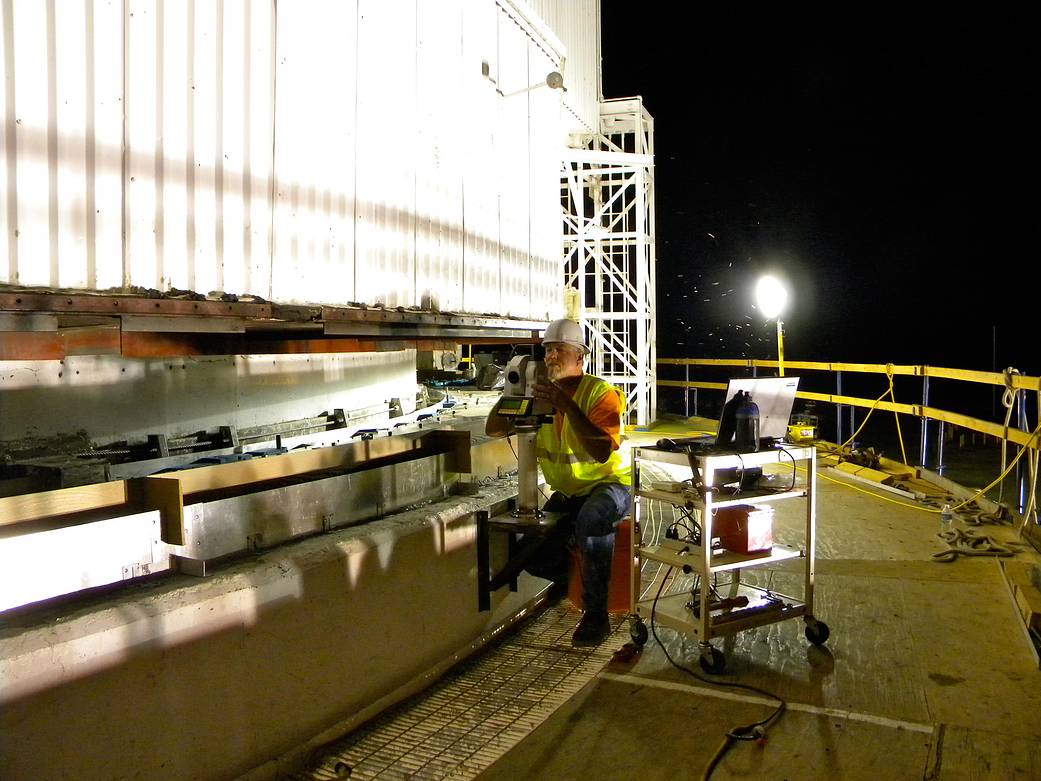
Tim Sink, an engineer at NASA’s Jet Propulsion Laboratory in Pasadena, Calif., checks the evenness of sole plates installed on the giant “Mars antenna” at NASA’s Deep Space Network communications site in Goldstone, Calif. The sole plates are part of a hydrostatic bearing assembly that enables the antenna to turn horizontally. The work is part of a major surgery on the giant, 70-meter-wide (230-foot-wide) antenna. The sole plates, and the steel runner segments that will be placed on them, need to lie flat for the bearing to work properly. The laser leveling was done at night to ensure that the sole plates are not deformed, even a tiny amount, by expansion of the steel from heating caused by the exposure to sunlight.
This image was taken on July 8, 2010.
While officially dubbed Deep Space Station 14, the antenna picked up the Mars name from its first task: tracking the Mariner 4 spacecraft, which had been lost by smaller antennas after its historic flyby of Mars.
For more information about the Deep Space Network, visit http://deepspace.jpl.nasa.gov .
Image credit: NASA/JPL-Caltech



























